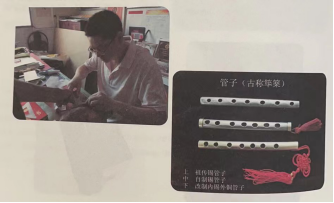申报地区:洛龙区 2020年08月 第5批
管子自汉代古西域经丝绸之路传入中原并进入宫廷。原为“南山截竹为筚篥”,是以竹做管而成,加上芦苇制作的哨子便可吹奏。宋元后,管子随宫廷乐流入民间,已由竹管改制成为锡质管子。锡制管子一直流传到建国初期还有市场。上世纪末,经海神乐传人郭红运反复摸索,将流传千年的五音锡管改为七音,并创制了内锡外铜、美观音正的新型管子,填补了市场空缺。
完整的管子包括管身及吹嘴两部分。管身材料古代有竹、木、锡及罕见的银筚篥。管身上所钻的音孔大小及间距都有讲究。吹嘴材料千年依旧,正如白居易诗中写到“荡削乾芦插寒竹”,芦苇仍发挥着作用。所用芦苇需选取高寒阴坡,地坚磁处所长。有了芦苇尚需蒸、煮、削、刮压热处理进行定型,而后是缠、削、刮的冷加工过程,需十分留心不可大意。

Guanzi, made of bamboo as a tube and weed as a whistle, was firstly introduced to the Central Plains and entered the imperial palace from the ancient Western Regions of the Han Dynasty(202 BC-220 AD) via the Silk Road. After the Song and Yuan Dynasties, Guanzi grew in popularity among common people with the raw material changed from bamboo to tin Inheritor Guo Hongyun upgraded the five-tone tin pipe circulating for thousands of years to seven-tone pipe with tin in the interior and copper in the exterior.
